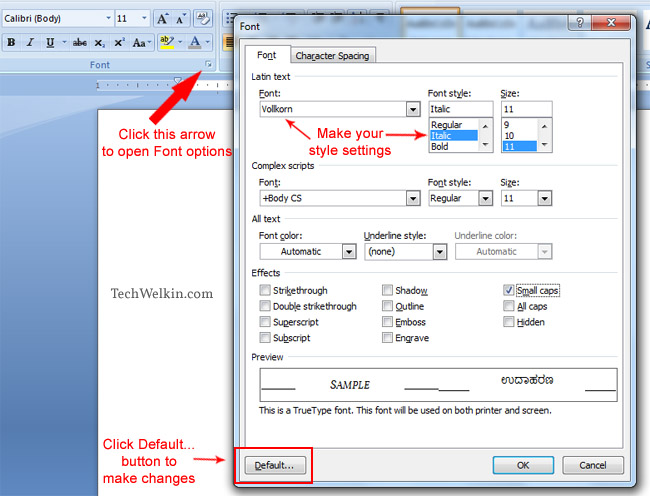

Choose “All Files” from the “Save as type” dropdown menu, select a location to save your file in, and click “Save.” For example, to save the file as “mynewfont”, you’d type “mynewfont.reg”. Then enter a name followed by “.reg” in the “File name” field. Make sure that you keep double quotes around the font name as already shown in the code. Then, replace “NEW-FONT” in the code with the name of the font you noted earlier. To start, open the “Start” menu, search for “Notepad,” then click the first result.Ĭopy the following code and paste it into a new Notepad document. You can use a text editor like Notepad to make registry hacks. Now, you need to create a registry hack that adds this font to the Windows Registry. On the right pane, find the font that you want to set as the default and click the font name.Īt the top of your screen, you can see the official name of your font.
Configure the Default Font Format settings as applicable.In Settings, click “Personalization,” then select “Fonts” in the left sidebar. Click Org in the User Admin section of the Settings panel. Click the User's initials (avatar) in the bottom left corner of the navigation sidebar. Existing Templates and Sequences will need to be manually updated to reflect these changes. For more information regarding governance profile settings, refer to the Governance Profile Settings Overview article. If the options outlined in this article are unavailable, contact the Org's Outreach Administrator as applicable.  Some Outreach views and options require admin-level governance permissions. This determines the default font and size for all users, but it can still be adjusted by the individual user in the email compose window. The purpose of this article is to provide direction to Outreach Admins in adding a default font for content.Īdmins have the ability to set a default font for all of their Outreach users, found under the org settings.
Some Outreach views and options require admin-level governance permissions. This determines the default font and size for all users, but it can still be adjusted by the individual user in the email compose window. The purpose of this article is to provide direction to Outreach Admins in adding a default font for content.Īdmins have the ability to set a default font for all of their Outreach users, found under the org settings.






 0 kommentar(er)
0 kommentar(er)
